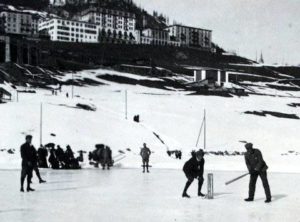An English Affair
11 December 2020
The development of tourism in Switzerland in the second half of the nineteenth century was mainly an English affair.
Many famous and well-known personalities had already visited the Confederation in the eighteenth century, whether on their way to Italy and Greece or as scholars, writers, businessmen or politicians.
Many visitors wrote about the beauty of the country, the political system, the history and the absence of royalty and aristocracy, an anomaly in this period.
Many memoirs, travel books, articles in the press and the first guidebooks (Baedeker for example) were published.
The Swiss rail network expanded in the second half of the nineteenth century and the number of tourists increased.
The first Alpine clubs were founded and agencies (Thomas Cook) organized the first tours.
Remote areas were discovered and tourism became a real business. The British accounted for 85% of the visitors in this period.
Many jobs were created, such as mountain guides, catering services, hotel- and casino staff, coachmen (for the transport from the train station to the final destination), shopkeepers, traders, translators, photographers, and information agencies.
Tourism caused an economic boom and new employment and work opportunities in remote areas. It also changed the urban and village landscape and way of life.
British food was introduced, theatrical and musical performances were organised in hotels, lawn tennis courts and golf courses were created.
Local villagers often participated in these activities and there was some cultural interaction.
Hotels created chapel rooms in their premises or gave land to build churches. The British tourtists financed these ventures and British architects designed the places of worship..
There were more than 30 English church buildings in Switzerland in 1914. The Church of England appointed seasonal or full-time chaplains.
(Source: D. Conrad-Daubrah, ´Pontresina´s 19th – century British visitors´ in Graubünden Ecxlusiv, Nr. 55, 2017 and www.pontresina.ch/museumalpin).

